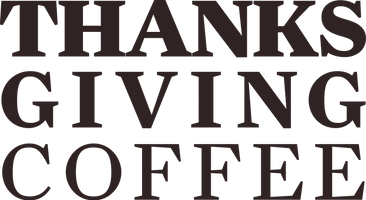The Cupping Lab Revolution: How Thanksgiving Coffee Changed Coffee Forever
Cupping Coffee , Nicaragua
It began with a journey to Nicaragua in the 1980s. Paul Katzeff, a former social worker and co-founder of Thanksgiving Coffee, traveled to listen to the farmers. Paul had the tools and vision to create a new way forward for the coffee world.
In those war-torn hills, Paul came face to face with the quiet strength of farmers who had survived conflict, drought, and poverty. What he discovered would transform his understanding of coffee forever.
What Paul saw was that coffee could be more than just a product. It could become a tool for restoring dignity, building solidarity, and giving voice to those who had been left out of their own story.
Nicaruaguan Coffee Farmers coming home, photo by Paul Katzeff
Coffee as a Bridge Between Worlds
Paul's 1985 trip to Nicaragua occurred during the U.S.-backed Contra War—a time of immense hardship and tension. What he witnessed moved him deeply: farmers cultivating resilience amid unimaginable challenges. Meeting with PRODECOOP, one of the earliest farmer cooperatives, he understood that meaningful change would require more than charity. It would take genuine partnership.
This experience birthed a vision for direct trade built on empathy and transparency. Paul saw coffee as more than a commodity—he saw it as a bridge connecting people across borders, across struggles, and across systems built to exclude the voices of those who grow the coffee we love.
Coffee Processing Nicaragua
Preparing coffee to dry - Nicaragua
Roasting coffee in traditional oven at the Lopado Farm, Nicaragua, photo by Paul Katzeff
Grinding coffee in traditional outdoor style, photo by Paul Katzeff
A Revolution Born from Relationship
Years later, in 2001, Paul's vision took physical form when Thanksgiving Coffee helped create the world's first farmer-owned cupping labs. It started with a simple question:
What if those who grow the coffee were also the ones to taste it first?
That question sparked a revolution—and in partnership with our co-ops like UCA MIRAFLOR and CECOCAFEN, it redefined not just how coffee is evaluated, but who gets to define its value.
This work began with trust.
When Thanksgiving Coffee first partnered with these cooperatives, they were communities rising from hardship with their own vision. Families were replanting forests, rebuilding homes, and forming cooperatives that prioritized not only trade, but democracy, biodiversity, and food sovereignty.
Frank Lanzas Family
Fernandito Family
Fernando Beneficio
Maria Elena
As field researcher Christopher Bacon wrote:
"This is a story of reconstruction and resistance... of families working together to regenerate their communities, reclaim the land, and build new institutions of democratic governance."
In these post-war communities, farmers didn't just return to the land—they reimagined its future. By placing cupping labs in their hands, Thanksgiving Coffee wasn't introducing a new tool—they were honoring a movement already in motion.
Redefining the Waves: How Cupping Labs Transformed Coffee Culture
The history of specialty coffee is often described in "waves." The First Wave brought coffee to the masses. The Second Wave introduced espresso culture and coffee as an experience.
But it was the Third Wave—focused on origin, transparency, and craft—that truly began to value the farmer's role. And it was here that Thanksgiving Coffee's cupping labs created their most profound impact.
The Coffee Cuppers Manifesto, by Paul Katzeff 2001
"The $300,000 enabled 9 coops to build their labs and be trained as cuppers by me using SCAA scoring forms. It is one thing to have a lab but another thing to know how to use it. Training was essential. "
- Paul Katzeff
In 1999, when most coffee buyers still made quality decisions without farmer input, Thanksgiving Coffee proposed something radical: building professional cupping labs directly within producer cooperatives in Nicaragua. With a $300,000 USAID contract and decades of field experience, these labs were constructed in 2000, becoming the world's first farmer-owned and operated cupping facilities.
The innovation couldn't have been better timed. As Third Wave coffee culture was gaining momentum in the early 2000s with its focus on single-origin beans and transparent sourcing, these cupping labs equipped farmers to meet this new demand with unprecedented precision.
Suddenly, farmers could:
- Taste and analyze their own coffee before it left the farm
- Create detailed flavor profiles previously only done by importers
- Develop specific micro-lots for specialty markets
- Experiment with processing methods that enhanced quality
- Engage in price negotiations based on verifiable quality data
By 2001, the Cuppers Manifesto was born—a bilingual manual distributed to 10,000 Nicaraguan farmers and later shared with 8,000 producers in Colombia by the Colombian Coffee Federation.
Coffee Processing Nicaragua, photo by Paul Katzeff
From Third Wave to Fourth: Farmers as Flavor Artists
What began as a Third Wave innovation has evolved into something even more profound—what many now call the "Fourth Wave" of coffee, where farmers themselves have become recognized artists of flavor creation.
Today's most celebrated coffees often feature not just the region or farm name, but specific processing techniques developed and perfected by individual farmers—techniques like honey processing, extended fermentation, and anaerobic processing that create distinctive flavor profiles impossible to achieve through roasting alone.
This transition—from farmers as anonymous producers to farmers as named innovators—can be traced directly back to those first cupping labs. When farmers gained the ability to taste, evaluate, and experiment with their own coffee, they unleashed a wave of innovation that continues to transform the industry.
As Paul shared in a later interview:
"Coffee is about people. If you take care of the people, the coffee takes care of itself."
These labs didn't just reflect a shift in coffee culture—they helped create it. From these humble beginnings in rural Nicaragua grew the foundations of today's artisan coffee movement, where quality and value begin at the source and rise through shared craftsmanship.
UCA Miraflor Cooperative, 2023 Nicaragua
Hermanez Montenegro Family with drying coffee behind, photo by Paul Katzeff
A Legacy You Can Taste
SongBird Nicaraguan, Medium Roast
From UCA MIRAFLOR, this coffee represents the pinnacle of farmer-led quality development.
Bird Friendly certified, it supports both sustainable farming and migratory bird habitat.
Tasting Notes: Mango, nutty, chocolate
Miel de Cajamarca, Light Roast
From CENFROCAFE, Peru. Named for the honey-processing techniques refined in origin cupping labs.
This coffee showcases the artisan experimentation that defines Fourth Wave coffee.
Tasting Notes: Honey, papaya, milk chocolate
Join the Revolution in Your Cup
The Cupping Lab Revolution was more than the technology of tasting coffee. It was—and still is—about relationship, repair, and reclaiming the right to define what coffee can be.
Every cup of Thanksgiving Coffee connects you to this ongoing story of transformation—from Third Wave transparency to Fourth Wave farmer artisanship. It's an invitation to participate in a more equitable, relationship-based trade model that honors both the product and its producers.
It is about following a path with heart to let it guide you to be in good relationship with life and the world.
The Cupping Legacy continues - on the left, CEO Jonah Katzeff - on the right, Co-Founder and Board President Paul Katzeff of Thanksgiving Coffee Company
The Way
"The way to great coffee flavor is not direct.
The path must be traveled
with great care and attention.
The way becomes a path, the path a road,
and then, magically, the road becomes a highway
that leads to people who cultivate the land on which the coffee derives its special flavor.
How does one find the path? Through caring.
One does not search so much for the road that leads to the tree, as for the road that leads to the heart.
This is the secret."
Paul Katzeff
Co-founder, Thanksgiving Coffee Company
Lavender Grace is the Sustainability Consultant for Thanksgiving Coffee Company.
Stay in touch - we like to stay connected








